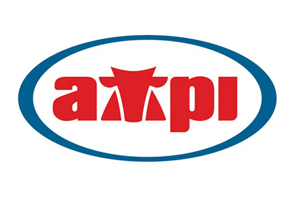
|
Trucks hauling milk from Associated Milk Producers Inc. member farms to manufacturing plants will log 44,000 miles in 24 hours — or the distance to travel roundtrip from Anchorage, Alaska, to Key West, Fla. — four times.
Advances in technology are now making it possible for AMPI to better manage the milk-hauling miles. A new program rolling out this fall will increase route-hauling efficiencies by reducing miles and hauling more milk per mile. In addition, haulers will be paid more consistently cooperative-wide.
“We performed a thorough analysis of hauling routes and compared rates paid across all haulers and AMPI divisions,” said Donn DeVelder, senior vice president of procurement and human resources. “We found opportunities to haul milk more efficiently and wide variances in hauler rates for similar-sized routes traveling the same number of miles.”
DeVelder and AMPI President and CEO Ed Welch presented the results of the analysis at AMPI division meetings held in June. Their message: “We can haul milk more efficiently and pay haulers more equitably.”
Comparing milk routes and what the co-op was paying each hauler provided a starting point for developing a new program. Determining what a more consistent program could look like required more investigating and assistance.
New model development
Working together with professional milk-hauling consultants from Dairy.com, AMPI developed a new model (or calculation) to determine how haulers will be paid.
“We’ve long analyzed hauling routes internally, but working with Dairy.com has significantly increased what we can learn about milk movement,” DeVelder said.
Information gleaned from Dairy.com’s advanced routing technology and the cooperative’s current contract haulers made the model more accurate. It includes the manifest detail for each route (number of farms, total pounds of milk and miles driven) and major hauling cost categories, resulting in per-mile costs, at-farm costs and at-plant costs.
The model takes into account truck input costs, considering newer trucks and tankers would have different depreciation, maintenance and mileage values than older versions. Other inputs considered were fuel, tires, insurance, driver pay, workers’ compensation and time accrued at the farm and plant.
“Our intention with this program is to pay every hauler using the same formula based on miles driven, stops made and pounds of milk picked up,” DeVelder said. “These rates need to be sufficient to enable haulers to cover operating costs, replace equipment as needed, cover overhead costs and earn a fair return on investment so they can continue to provide this service to our members.”
Taking a test drive
A pilot program in AMPI’s Sanborn, Iowa, and Paynesville, Minn., divisions is currently under way. Division managers met with haulers in June to tell them about the project and share some initial findings. The milk haulers were encouraged to provide input on the cost factors considered.
“We began the pilot project knowing that communication was going to be key,” said AMPI Paynesville Division Manager Matt Quade. “We sat down with every hauler and broke down the model to show them what was accounted for and how hauler pay would be calculated. The response has been good.”
Mark Kaeding is a member of the AMPI Board of Directors’ member services committee and has had the opportunity to review the suggested changes and tweaks.
“The process of developing the new program was very thorough, and the result is something that truly covers all the bases,” Kaeding said. “We are constantly working on maximizing efficiencies and reducing costs on our individual farms. The same can be said for our cooperative and milk haulers.”
Kaeding calls the new program fair, consistent and responsible. “This will be a benefit to our members and our haulers in the long run,” Kaeding said.
DeVelder notes the new program will continue to evolve as the thoughts and concerns of both groups are shared.
“We are pleased with the initial program model,” DeVelder said. “It will help us continue to manage one of the cooperative’s biggest expenses, hauling milk, as efficiently as possible to keep member costs down.”
Reprinted with permission from “Dairymen’s Digest,” July/August 2012, a publication of Associated Milk Producers Inc.
Dairy Foods seeks essays from dairy processors. Contact carperj@dairyfoods.com.

Recent Comments
Discount code
Alex Shimray
Thank you for sharing this! This is really...
Thank you for sharing this! This is really...
yes, nowadays more teenagers like to have a...